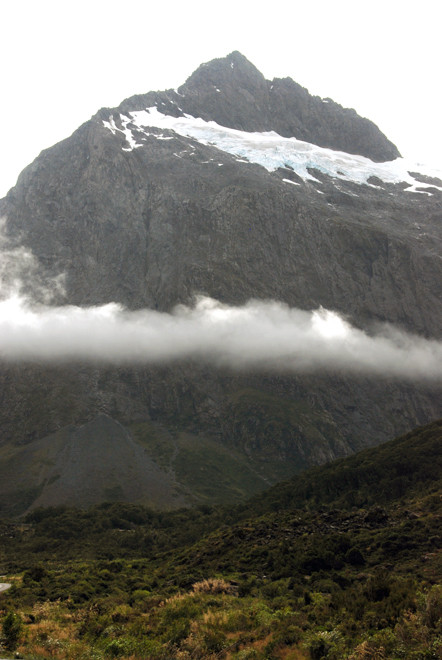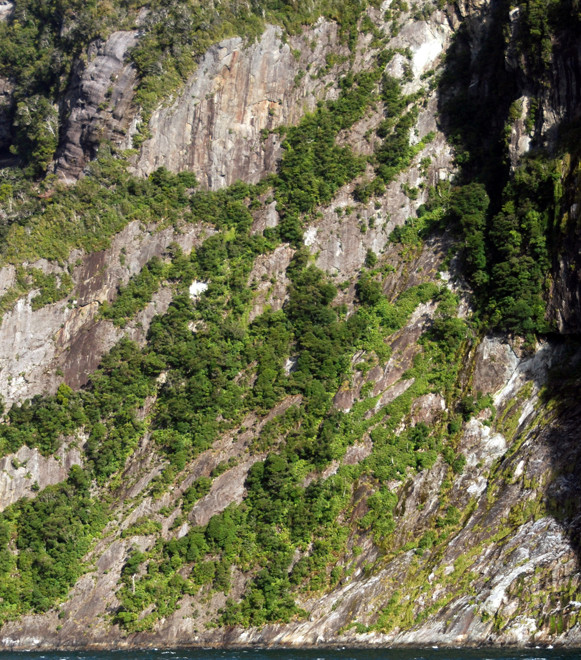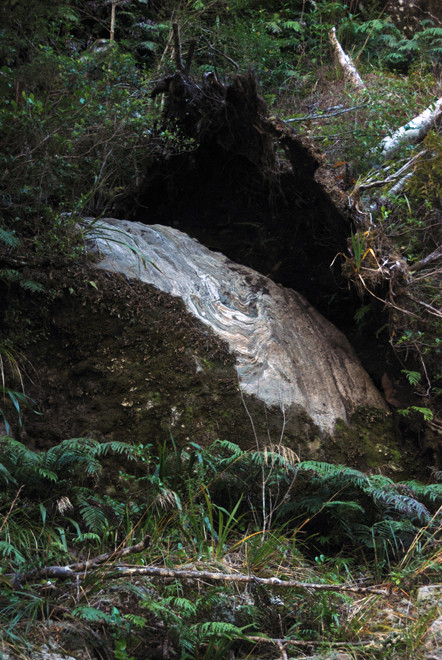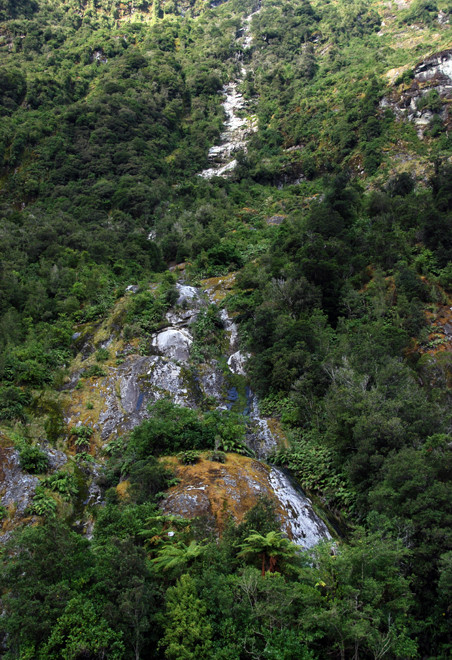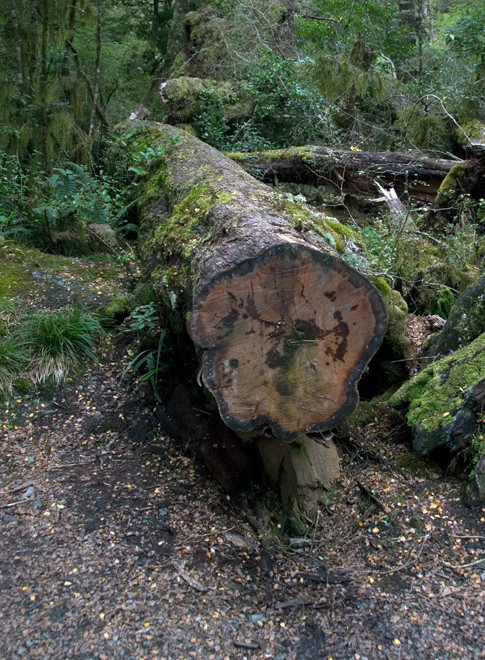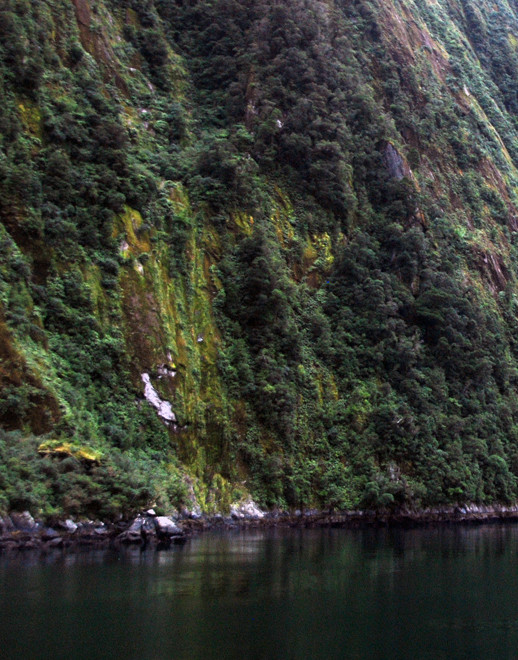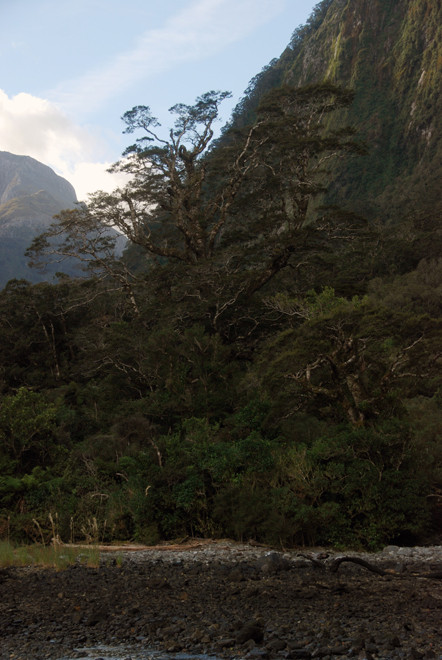VIII. Fiordland Temperate Rain Forest: the Road to Milford Sound

Beech and Podocarp Forests
'The southern beeches and podocarps are very old elements of New Zealand flora. They have flourished and continue to dominate the forests of Fiordland. Silver beech and mountain beech are the most widespread species. Red beech is the largest in size but the least hardy of the beeches, being essentially a lowland species seldom found above 400 metres within Fiordland National Park. Near lakes and fiords, rimu stands out from the darker canopy of beech because of its weeping, tawny- green branchlets, and on alluvial flats fine specimens of rimu, miro, and totara are often prominent.'
Fiordland National Park Management Plan 2007 p. 46

Forest coverage and character
About two-thirds of Fiordland National Park is forested: it is the largest continuous area of indigenous forest remaining in New Zealand. Beech forest predominates but podocarp and other species are also abundant. The vegetation has complex multi-layered structures characteristic of rainforests, with a dense covering of wet mosses, liverworts, lichens and filmy-ferns on the ground and on tree trunks. The understorey is made up of diverse shrub species such as coprosma, broadleaf, five finger and various ferns.
Fiordland National Park Management Plan 2007 p.17
For much more on New Zealand's temperate forests see my pages on this topic.
A 1960s study of forest stands at different altitudes along the Hollyford valley including a plot just beneath the eastern portal of the Homer Tunnel conluded:
The [valley] floor and lower slopes ... up to an altitude of above 1600 ft. are occupied by beech-podocarp-kamahi forest, in which the subordinate layers are well developed. Beech and podocarp trees form a rather open canopy, the gaps in which are filled chiefly by kamahi. On the valley floor, red beech and pokaka (Elaeocarpus hookeri- anus) are characteristic, although silver beech, rimu, miro, thin-barked tara and kamahi are also present.
These latter species are better developed on the lower valley sides. Silver beech and kamahi are the predominant species at both sites.
A small-tree layer, mannia racemosa, Pseudopanax edgerleyi, P. crassifolium, Neomyrtus pedunculata, Griselinia littoralis, Pseudowintera colorata and Myrsine divari- cata is relatively well developed, together with both shrub and herb layers.
Prominent shrubs in this lowland forest zone include Neomyrtus pedunculata, Coprosma colensoi, C. foetidissima, Dicksonia squarrosa, Weinmannia racemosa, Pseudowintera colorata and Neopanax simplex.
The herb layer is dominated by Blechnum discolor and B. minus.
Above the upper limits of the lowland mixed forest, a beech forest dominated by silver beech continues to treeline at about 3250 ft. This forest lacks a well-defined small-tree layer, although shrub and herb layers remain distinct.
Shrubs increase in importance due to the incoming of Coprosma pseudocuneata and the increased abundance of C. astonii. Taking the shrub layer overall, it is clear that there are two classes of shrubs; those such as N eomyrtuspedun- culata, Coprosma colensoi and Dicksonia squarrosa which are plentiful only at low levels, and those such as Coprosma astonii, C. ciliata and C. pseudocuneata which are plentiful only at the higher levels.
There is thus a zone between 600 ft. and 2000 ft. in which the shrubs layer is weak although it contains at least nine species.
This weakness may be related to the greater incidence of red deer.
All above from MARK, A. and SANDERSON, F. (1960) THE ALTITUDINAL GRADIENT IN FOREST COMPOSITION, STRUCTURE AND REGENERATION IN THE HOLLYFORD VALLEY, FIORDLAND

Tree Avalanches
'Tree avalanches are another regular and distinctive landform feature; their effects include the filling of valley floors, the damming of rivers and formation of lakes. Much of the Fiordland forest clings to steep faces of hard rock covered only by a pad of peat and moss, providing rooting space which would be inadequate in a drier climate. Great scars are common where the forest has lost its precarious hold or where a landslide has carved a path through the vegetation.'
Fiordland National Park Management Plan 2007 p.44
As forest cover matures on steep slopes, the vegetation load progressively builds, until eventually failure occurs, and part of the vegetation mat begins to slip downslope.
... The failure surface is generally along a thin soil/overburden horizon between the bedrock and thick overlying vegetation. Once initial failure occurs, the failure may quickly propagate up and/or downslope, as the supporting influence of downslope vegetation is lost, and the load increases on downhill slopes, causing the failure to sweep down the hillside.
Dykstra, 2012 p.186-7.
